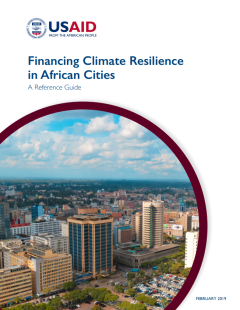
The urban population in sub-Saharan African is expected to more than triple between 2010 and 2050. That translates to more than 770 million individuals taking up residence in sub-Saharan African cities over a 40-year period. Given the enormous strain that will put on already scarce resources, urban management, and financing are more important than ever. A changing climate is projected to exacerbate the demand for financial capital for urban infrastructure and services. However, a sizeable funding gap currently exists to meet this challenge. While international donors and multilateral climate funds have a role to play to help bridge the finance gap, cities have a much wider set of tools available to them to finance climate resilience initiatives, many of which are already in use.
This reference guide, Financing Climate Resilience in African Cities, from the USAID-funded Adaptation Thought Leadership and Assessments (ATLAS) project provides an overview of the wide range of finance mechanisms available to governments to fund climate resilience initiatives at both the national and local level. The guide also outlines the opportunities and challenges for municipal governments in sub-Saharan Africa to use select finance mechanisms to provide for their citizens needs as cities grow and the climate changes, providing illustrative interventions to increase the change of each mechanism’s success.
